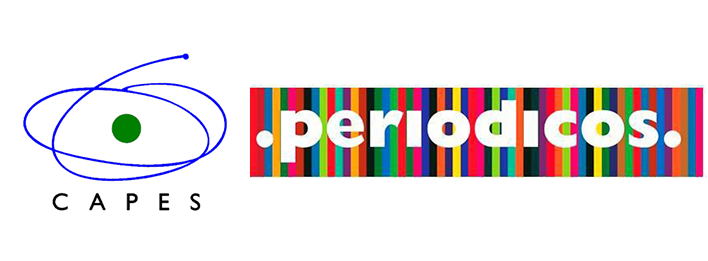How Many Likes?
Factors Influencing Intention to Visit a Conspicuous Tourism Destination
DOI:
https://doi.org/10.29149/mtr.v6i2.6639Palavras-chave:
tourism destination, conspicuous consumption, ewom, social return, symbolic imageResumo
The aim of this study was to measure the influence of Electronic Word of Mouth (eWOM), Social Return (SR) and Symbolic Image (SI) on the intention to visit a conspicuous tourist destination. The research had a quantitative approach; thus, data were collected through an online survey and the analysis realized by multiple linear regression. The results revealed that eWOM and SI have no influence on the intention to visit a destination. These findings are not in line with most academic researches, but may be associated with the degree of intangibility of tourism activity and the subjectivity of the individual consumer experience. SR demonstrated a positive influence on the intention to visit a conspicuous destination. Such result is congruent with and reinforces the findings obtained by previous researches on consumer behavior. The main contribution of this study consists in confirming the influence of social media on the intention to visit a tourism destination, in search of visibility, distinction and social prestige. Travel has become a tool for displaying status.
Referências
Abraham, V., & Reitman, A. (2018). Conspicuous Consumption in the Context of Consumer Animosity. International Marketing Review, 35(3), 412 – 428.
Abrantes, J. L., Seabra, C., Lages, C. R., & Jayawardhena, C. (2013). Drivers of In – Group and Out – Of – Group eletronic Word of Mouth (eWOM). European Journal of Marketing,47(7), 1067 – 1088.
Abubakar, A. M., Ilkan, M., Al-Tal, R.M., & Eluwole, K. K. (2017). eWOM, revisit intention, destination trust and gender. Journal of Hospitality and Tourism Management, 31, 220-227.
Ahn, T., Ekinci, Y., & Li, G. (2013). Self-Congruence, Functional Congruence, and Destination Choice. Journal of Business Research, 66(6), 719-723.
Ahrens, J., Coyle, J. R., Strahilevitz, & M. Ann. (2013). Eletronic Word of Mouth: the effects of incentives on e-referrals by senders and receivers. European Journal of Marketing, 47(7), 1034 – 1051.
Ajzen, I. (1991). The Theory of Planned Behavior. Organizational Behavior and Human Decision Process, 50, 179 – 211.
Anderson, E. W. (1998). Customer Satisfaction and Word of Mouth. Journal of Service Research, 1(1), 5 – 17.
Babbie, E. (2007). The Practice of Social Research. Thomson Wadsworth.
Bagwell, L. S., & Bernheim, B. D. (1996). Veblen Effects in a Theory of Conspicuous Consumption. The American Economic Review, 86(3), 349 – 373.
Baudrillard, J. (1998). The Consumer Society: myths and structures. Sage Publications.
Berger, J., & Ward, M. (2010). Subtle Signals of Inconspicuous Consumption. Journal of Consumer Research, 37(4), 555 – 569.
Boley, B. B., Jordan, E. J., Kline, C., & Knollenberg, W. (2018). Social Return and Intent to Travel. Tourism Management, 64, 119 – 128.
Boo, S.; Kim, J. (2013) Comparison of Negative eWom Intention: na exploratory study. Journal of Quality Assurance in Hospitality and Tourism, 14(1), 24-48.
Castells, M. (1982). City, Class and Power. Macmillan Education.
Chang, J. H., & Wang, S. H. (2019). Different Levels of Destination Expectation: the effects of online advertising and electronic word-of-mouth. Telematics and Informatics, 36, 27-38.
Correia, A., Kozak, M., & Reis, H. (2016). Conspicuous Consumption of the Elite: Social and Self-Congruity in Tourism Choices. Journal of Travel Research, 55(6), 735 – 750.
Correia, A., & Kozak, M. (2012). Exploring Prestige and Status on Domestic Destinations: the case of algarve. Annals of Tourism Research, 39(4), 1951 – 1967.
Cui, H., Fam, K-S., Zhao, T., Xu, W., & Han, C. (2019). How to save the wounded self: Power distance belief's moderation of self‐identity threat and status‐related consumption. Journal of Consumer Behavior, 19(1), 3-12.
Duan, J., & Dholakia, R. R. (2017). Posting Purchases on Social Media Increases Happiness: the mediating roles of purchases’ impact on self and interpersonal relationships. Journal of Consumer Marketing, 34(5), 404 – 413.
Ekinci, Y., Sirakaya-Turk, E., & Preciado, S. (2013) Symbolic consumption of tourism destination brands. Journal of Business Research, 66(6), 711 – 718.
Erkan, I., & Evans, C. (2016). The Influence of eWOM in Social Media on Consumers’ Purchase Intentions: na extended approach to information adoption. Computer in Human Behavior, 61, 47 – 55.
Ferreira, M. L. A., Graciano, P. F. Leal, S. R., & Costa, M. F. (2019). Noite de terror na cidade luz: os atos terroristas em Paris e a avaliação da imagem de destino por turistas brasileiros. Revista Brasileira de Pesquisa em Turismo, 13, 19 – 39.
Ferreira, M. L. A., & Costa, M. F. (2020). No tan desvergonzadas: El empoderamiento de las mujeres gordas y sus cuerpos en los destinos de sol y playa. Estudios y Perspectivas em Turismo, 30, 472 – 500.
Groeger, L., & Buttle, F. (2014) Word – Of – Mouth Marketing: towards an improved understanding of multi – generational campaign reach. European Journal of Marketing, 48(7/8), 1186 – 1208.
Grupta, P., & Harris, J. (2010). How e-WOM Recommendations Infuence Product Consideration and Quality of Choice: a motivation to process information perspective, Journal of Business Research, 63(9/10), 1041 – 1049.
Hair, J. F., Black, W. C., Babin, B. J., Anderson, R. E., & Tatham, R. L. (2009). Análise multivariada de dados. Porto Alegre: Bookman.
Han, S.H., Nguyen, B., & Simkin, L. (2016). The Dynamic Models of Consumers’ Symbolic Needs: in the context of restaurant brands. European Journal of Marketing, 50(7/8), 1348 – 1376.
Harrigan, P., Evers, U., Miles, M., & Daly, T. (2017). Customer Engagement with Tourism Social Media Brands. Tourism Management, 59, 597 – 609.
Huang, Z., & Wang, C. L. (2018). Conspicuous Consumption in Emerging Market: the case of Chinese migrant workers. Journal of Business Research, 86, 366 – 373.
Jansson, A. (2018). Rethinking Post-Tourism in the Age of Social Media. Annals of Tourism Research, 69, 101 – 110.
Josiassen, A., & Assaf, A. G. (2013). Look at me—I am Flying: the influence of social visibility of consumption on tourism decisions. Annals of Tourism Research, 40, 155 – 175.
Kim, E., Ham, S., Yang, I. S., & Choi, J. G. (2013). The Roles of Attitude, Subjective Norm, and Perceived Behavioral Control in the Formation of Consumers’ Behavioral Intentions to Read Menu Labels in the Restaurant Industry. International Journal of Hospitality Management, 35, 203 – 2013.
Kim, E. E. K., & Lee, C. H. (2015). How do Consumers Process Online Hotel Reviews? the effects of eWOM consensus and sequence. Journal of Hospitality and Tourism Technology, 6(2), 113 – 126.
Leibenstein, H. (1950). Bandwagon, Snob, and Veblen Effects in the Theory of Consumers’ Demand. The Quarterly Journal of Economics, 64(2), 183 – 207.
Litvin, S. W., Goldsmith, R. E., & Pan, B. (2008). Electronic Word of Mouth in Hospitality and Tourism Management. Tourism Management, 29(3), 458 – 468.
Luna-Cortés, G. (2017). The Influence of Symbolic Consumption on Experience Value and the Use of Virtual Social Networks. Spanish Journal of Marketing – ESIC, 21(1), 39-51.
Malhotra, N. K. (2012). Pesquisa de Marketing: uma orientação aplicada. Bookman, São Paulo.
McCracken, G. (1986). Culture and Consumption: a theoretical account of the structure and movement of the cultural meaning of consumer goods. Journal of Consumer Research, 13, 71 – 84.
Moran, C., Boley, B. B., Woosnam, K. M., Jordan, E. J., Kline, C., & Knollenberg, W. (2018). The Battle of the Socials: which socially symbolic factors best predict intente to travel? Tourism Management, 68, 324 – 327.
Narangajavana, Y., Fiol, L. J. C., Tena, M. A. M., Artola, R. M. R., & García, J.S. (2017). The Influence of Media in Creating Expectations. Na Empirical Study for a Tourist Destination. Annals of Tourism Research, 65, 60 – 70.
Oliveira, T., Araujo, B., & Tam, C. (2020). Why do People Share their Travel Experiences on Social Media? Tourism Management, 78, 1-14.
Phillips, W. J., & Back, K. J. (2011). Conspicuous Consumption Applied to Tourism Destination. Journal of Travel & Tourism Marketing, 28(6), 583 – 597.
Rao, R. S., & Schaefer, R. (2013) Conspicuous Consumption and Dynamic Pricing. Marketing Science, 32(5), 786 – 804.
Sirgy, M. J., & Su, C. (2000) Destination Image, Self – Congruity, and Behavior: toward an integrative model. Journal of Travel Research, 38(4), 340 – 352.
Tangsupwattana, W., & Liu, X. (2018). Effect of Emotional Experience on Symbolic Consumption in Generation Y Consumers. Marketing Intelligence and Planning, 36(5), 514 – 527.
Veblen, T. (2007) The Theory of the Leisure Class. Oxford University Press.
Zhang, J.Q., Craciun, G., & Shin, D. (2010). When Does Electronic Word of Mouth Matter? a study of consumer product reviews. Journal of Business Research, 63(12), 1336 – 1341.
Zheng, X., Baskin, E., & Peng, S. (2018). Feeling Inferior, Showing off: the effect of nonmaterial social comparisons on conspicuous consumption. Journal of Business Research, 90, 196 – 205.
Downloads
Publicado
Como Citar
Edição
Seção
Licença
Copyright (c) 2021 Wendell de Moura Domingos, Adrielly Souza Silva, Marconi Freitas da Costa, Regina Gabriela Gomes Fialho

Este trabalho está licenciado sob uma licença Creative Commons Attribution 4.0 International License.
Autores que publicam nesta revista concordam com os seguintes termos:
- Autores mantém os direitos autorais e concedem à revista, sem ônus para a mesma, o direito de primeira publicação, com o trabalho simultaneamente licenciado sob a Licença Creative Commons Attribution que permite o compartilhamento do trabalho com reconhecimento da autoria e publicação inicial nesta revista
- Autores têm autorização para assumir contratos adicionais separadamente, para distribuição não-exclusiva da versão do trabalho publicada nesta revista (ex.: publicar em repositório institucional ou como capítulo de livro), com reconhecimento de autoria e publicação inicial nesta revista.
- Autores assumem exclusiva responsabilidade pelas suas opiniões emitidas nos trabalhos publicados nesta revista
















